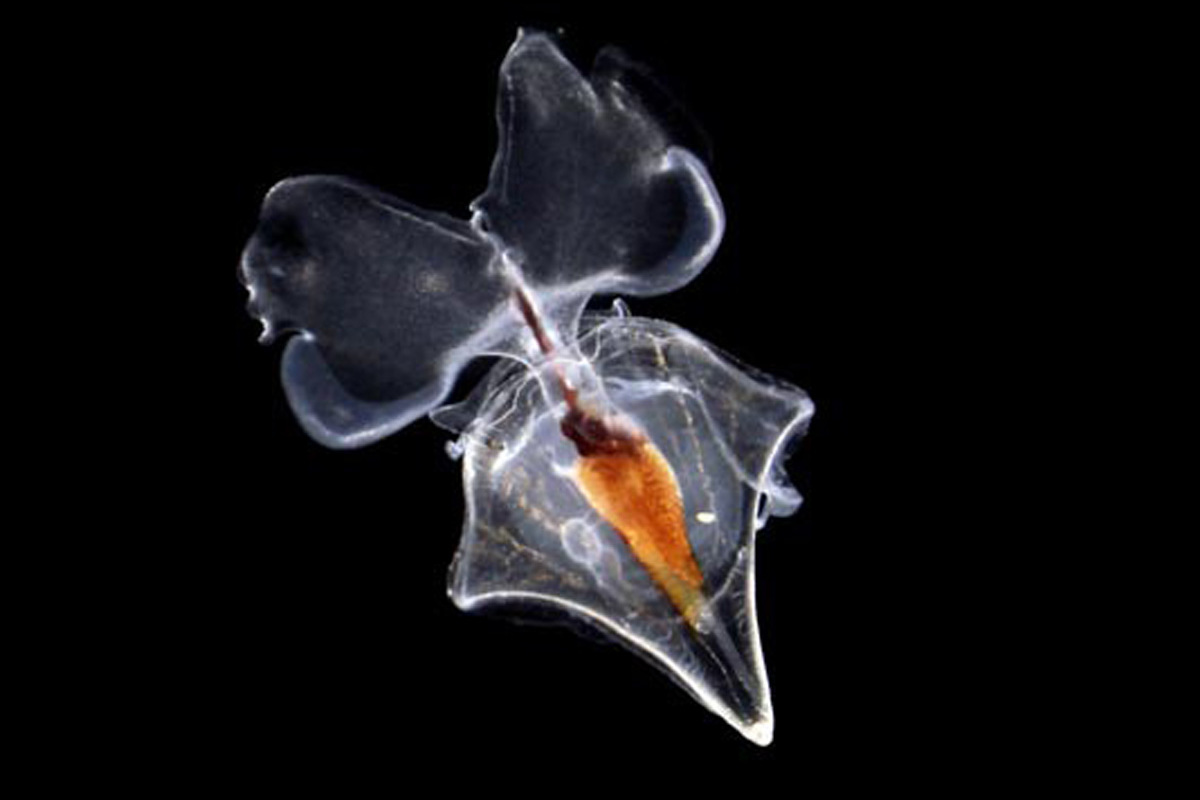Biodiversity & Environment
Sea Butterflies
- 18 May 2023
- 6 min read
For Prelims: Sea Butterflies, Ocean acidification
For Mains: Impact of climate change on marine ecosystems, Ocean acidification
Why in News?
The population of the sea butterflies in the Southern Ocean is shrinking due to climate change, making them extremely vulnerable.
What are Sea Butterflies?
- About:
- Sea butterflies, scientific name Thecosomata, are a suborder of sea snails known as shelled pteropods.
- They have muscular feet that allow them to swim in water instead of gliding on solid surfaces.
- Sea butterflies are holoplanktonic (organisms that pass their whole life floating, drifting, or swimming weakly in the water) and spend their entire life cycle in the water column.
- They are found in all oceans but are more diverse and abundant in colder waters.
- Sea butterflies have bilateral symmetry and a coiled or uncoiled shell of various shapes and sizes.
- Their shell is mostly transparent and very fragile and can be easily dissolved by ocean acidification.
- They have a pair of wing-like lobes or parapodia for propulsion and a head with eyes, tentacles, and a mouth with a long proboscis to capture prey.
- They have a reduced or absent gill and rely on their body surface for gas exchange.
- Importance:
- They are a major food source for many fish, seabirds, whales, and other marine animals.
- They also play a key role in transporting carbon from the surface to the deep ocean through their shells and fecal pellets.
How does Climate Change Impact the Population of Sea Butterflies?
- Ocean Acidification:
- Increased carbon dioxide absorption by the ocean leads to higher acidity.
- Reduced availability of carbonate ions necessary for shell formation and maintenance.
- The ocean is the most acidic in winter because cooler water absorbs more CO2. This means, the winter months are the most dangerous for the shelled sea butterflies.
- Sea butterflies' shells can dissolve, weaken, or deform.
- Increased vulnerability to predators, infections, and stress.
- Affects metabolism, growth, reproduction, and survival.
- Ocean Warming:
- Rising ocean temperatures due to climate change.
- Changes in distribution and abundance of sea butterflies.
- Seek optimal thermal conditions for development and survival.
- Alters food availability and quality.
- Impacts ocean currents and mixing affecting sea butterfly transport.
- Ocean Deoxygenation:
- Warmer and stratified ocean leads to decreased oxygen levels.
- Affects sea butterflies' respiration and energy balance.
- Alters vertical migration patterns.
- Exacerbates effects of ocean acidification by increasing dissolved carbon dioxide concentrations.
How can this Reduced Population Impact Antarctic Marine Ecosystems?
- Reducing the Food Availability for Higher Trophic Levels:
- Sea butterflies serve as a major food source for fish, seabirds, whales, and other marine animals.
- Population decline of sea butterflies can lead to starvation, malnutrition, or reduced reproduction in their predators and prey.
- Sea butterflies serve as a major food source for fish, seabirds, whales, and other marine animals.
- Disrupting the Balance of the Marine Food Web:
- Sea butterflies play a crucial role in linking primary producers (phytoplankton) with secondary consumers (zooplankton) and higher trophic levels.
- Decline in sea butterfly population can alter the structure and function of the marine food web.
- Biodiversity and productivity of the Antarctic marine ecosystem may be affected.
- Decreasing the Carbon Sequestration Capacity of the Ocean:
- Sea butterflies contribute to the "biological pump," transporting carbon from the surface to the deep ocean through their shells and fecal pellets.
- Population decline reduces the amount of carbon sequestered (process of capturing and storing atmospheric carbon dioxide) in the ocean.
- This results in increased carbon dioxide in the atmosphere and further ocean acidification.
UPSC Civil Services Examination, Previous Year Question (PYQ)
Prelims
Q. The acidification of oceans is increasing. Why is this phenomenon a cause of concern? (2012)
- The growth and survival of calcareous phytoplankton will be adversely affected.
- The growth and survival of coral reefs will be adversely affected.
- The survival of some animals that have phytoplanktonic larvae will be adversely affected.
- The cloud seeding and formation of clouds will be adversely affected.
Which of the statements given above is/are correct?
(a) 1, 2 and 3 only
(b) 2 only
(c) 1 and 3 only
(d) 1, 2, 3 and 4
Ans: (a)
Mains
Q. Assess the impact of global warming on the coral life system with examples. (2019)







